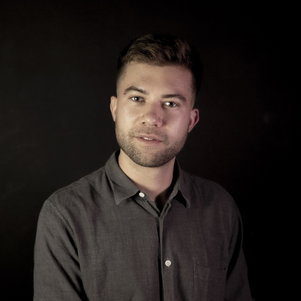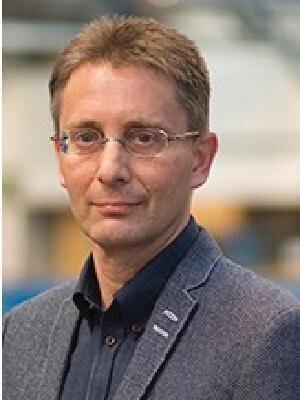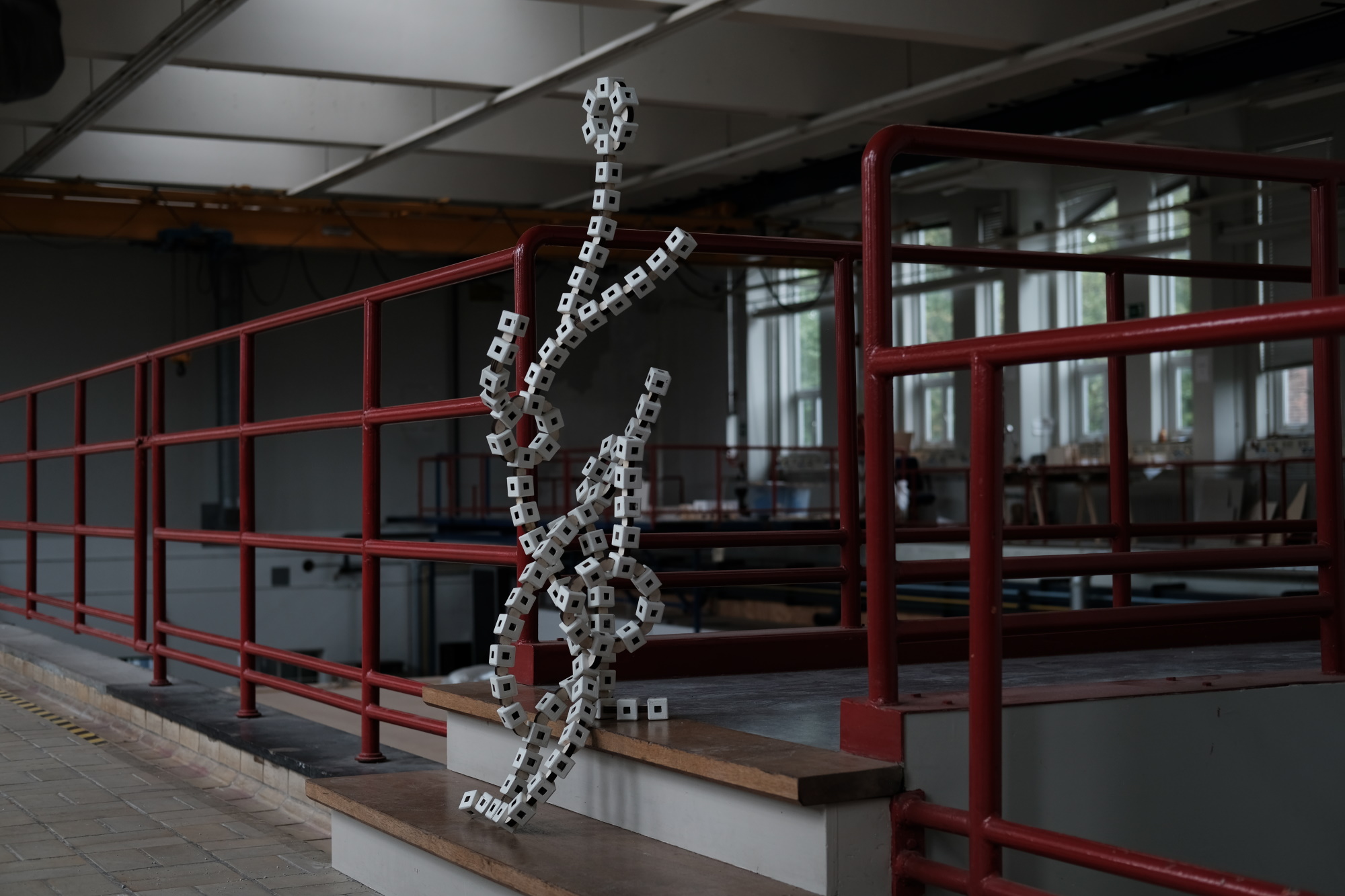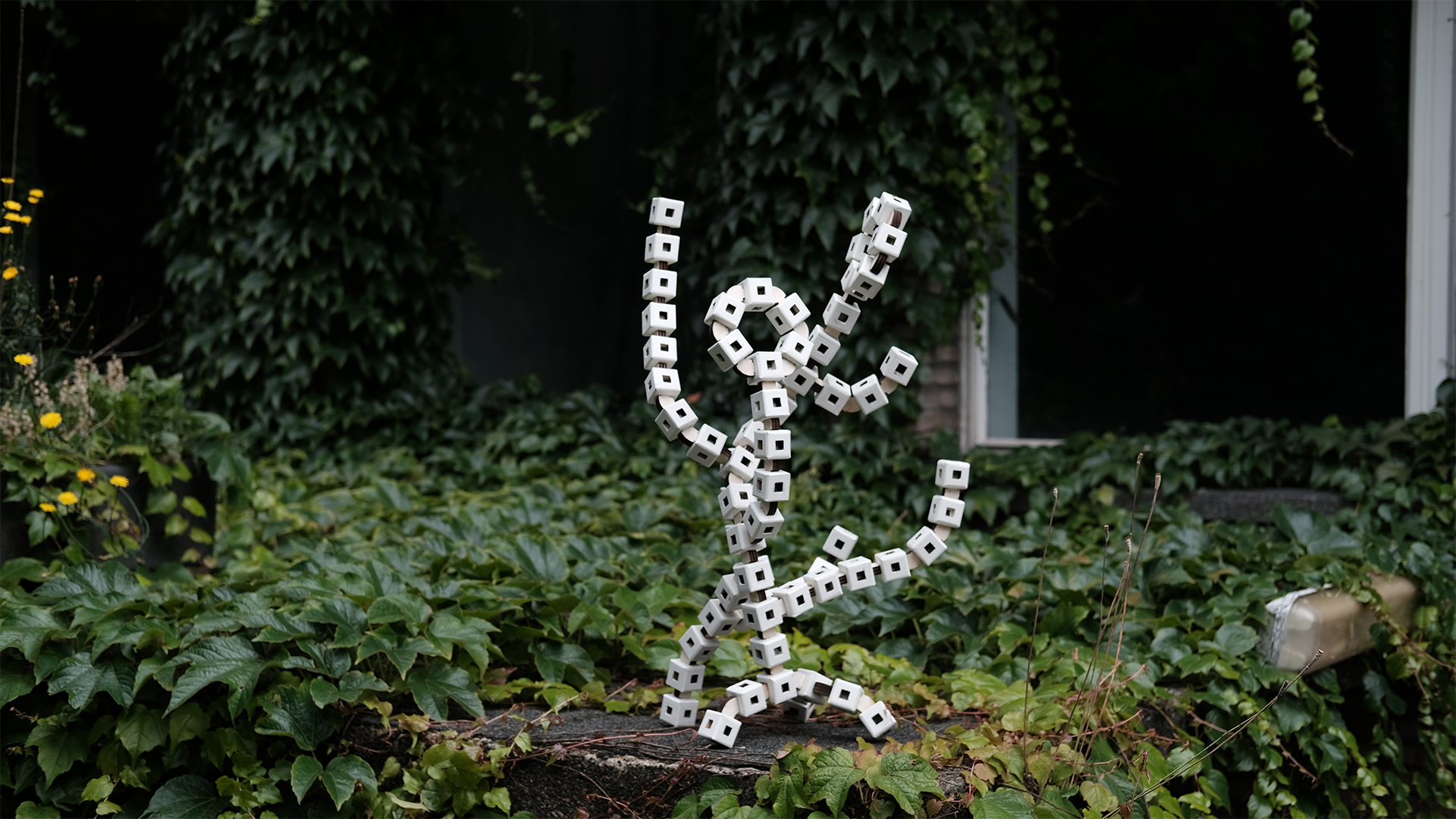A better environment from the comfort of your chair
A modular chair made of blocks in which CO2 has been stored and that can be converted into other pieces of furniture. With his special design - Unito - Riel Bessai, who recently graduated from the Faculty of Industrial Design, wants, above all, to tell a story. “With my chair I am making the global CO2 problem tangible and I hope to encourage people to view our consumer society from a different perspective.”
Forty-two large blocks that through means of a modular system – the Unito concept – are transformed into a lounge chair. When you are tired of it, you take the chair apart and use the blocks to build a bench, for example.
A modular system like this is already sustainable in and of itself, but the Unito concept goes beyond this. “The Unito blocks are made of bio-high density polyethylene (HDPE): a bio-plastic than can be used to store CO2,” Riel Bessai explains. “Approximately one kilogram of organic carbon is stored in each block, chemically derived from 3 kg of CO2. The increase of CO2 in the atmosphere is causing undesirable increases in temperature and is a direct cause of global climate change. “Because the material in the Unito blocks is derived from atmospheric CO2, the use of these blocks produces a negative CO2 footprint. The blocks will last at least 100 years making them a sustainable form of CO2 storage.”
CO2 is a huge global problem. In the Netherlands alone, annual CO2 emissions amount to 138 megatonnes, which represents an awful lot of chairs. What does Bessai think of this? “The global CO2 problem is absurd,” says Bessai. “This is why you should not view Unito as a final solution, but rather primarily as a conversation piece.” In other words, his chair is meant to open up a dialogue on the climate change issue.
He explains the story he wants to bring to the fore: “As a world, we are faced with a tremendous excess of CO2; my chair tangibly shows what a kilogram of carbon is. I got this idea from the aviation sector. When you take a trip by air you can pay to off-set your CO2 emissions; I make that CO2 tangible. Also, by creating a modular system I aim to encourage people to reflect on our throwaway culture. We need to find ways in which we can reuse our waste streams. I want to be practical in this regard. Economic growth is an important objective, especially for developing countries: people in those countries want a higher living standard. That is natural, but it would be good to consider how you can achieve that growth without causing any damage, or better still by actually helping to reduce climate change.”
His environmental activism and his passion for making furniture come together in his design. “I believe I was already concerned about the climate when I was six years old,” says Bessai, who for the most part grew up in Canada. “Even for my generation, in which environmental activism is a fairly well accepted norm, that was pretty young.” This is due to my mother’s influence, he explains. She is a diplomat and instilled a broad view of the world in him. “Due to her work I lived in Vietnam when I was between thirteen and sixteen years of age. This gave me insight into some of the major problems in the world and how challenging it is to provide solutions on a large scale.”
His passion for making furniture arose some ten years later. “I made my first table when I was sixteen years old, but when I moved into a large empty loft in Montreal as a student with friends I went completely wild. I made tables, chairs and countertops. I enjoy working with my hands and during my youth I worked in the construction sector during several summers. That experience came in very handy during my master’s education.”
The idea of creating a chair with a story did not just land on his doorstep. “Before that I was pursuing a different track. During the honours programme at TU Delft which I was enrolled in after having completed my bachelor’s in Mechanical Engineering, I investigated the feasibility of developing a process that could be used to directly convert CO2 into a material. Much like how plants use photosynthesis to convert CO2 into chloroplasts. In theory this appeared to be possible, however such a process requires a great deal of energy and therefore is not yet feasible at scale. I switched my thinking towards using biobased feedstocks as a means to achieve CO2 conversion through materials, and I wrote a whitepaper about the insights I had acquired. Because my whitepaper did not generate much interest, I realised that a whitepaper was much too dull and not a good vehicle for telling the ‘big story’. I had to make it tangible.”
He immersed himself in speculative design, which starts with an artefact as the basis for telling a story, explored the area of aesthetics and conducted research into materials. “I drew up my own plan and derived a great deal of inspiration from my discussions with Professor Ruud Balkenende – about technology – and Erik Jepma – about art, who provided me with guidance during my master’s studies. They were a constant source of new ideas and insights that enabled me to move forward.”
As a result of the out-of-the-box design he developed during his master’s in Integrated Product Design he received a nomination as Best Graduate of the Faculty of Industrial Design. The evaluation board complimented him for the refreshing way in which he draws attention to the climate change issue and sees potential is his use of materials.
Bessai is happy with the nomination and considers it special: “Ultimately, making furniture as an industrial designer is really old school. Nowadays, designers tend to focus far more on service design, where the designer focuses on improving service delivery. IT interfaces are an example that comes to mind here. But I think there is still something very valuable about the potential of tangible objects to inspire curiosity in people and tell stories.”
Bessai does not have a fixed plan for the future. “I think that it will become a multi-faceted scenario. I am not yet finished telling stories about major themes and would also find a consulting role interesting. At the same time I have a technical background to fall back on and I would not exclude the possibility of enrolling in a PhD programme. What I know for sure is that I would like to stay in Europe for another few years before returning to Canada. I really enjoy the shorter distances here and how you can just about get anywhere by train. Aside from this I am certain that I will always be making furniture. In any event for myself and perhaps for others as well. Although before I do that, there are enough big problems to solve first.”

Riel Bessai

Ruud Balkenende
- +31 15 27 81658
- a.r.balkenende@tudelft.nl
-
Room B-3-310

Erik Jepma
-
Mentor

![[Translate to English:] Riel met zijn modulaire stoel-element](https://filelist.tudelft.nl/IO/Onderzoek/Discover_Design/Riel%20Bessai/IMG_4381.jpg)
![[Translate to English:] Grid visual van isoblocks](https://filelist.tudelft.nl/IO/Onderzoek/Discover_Design/Riel%20Bessai/isoblocks2_ps.jpg)



![[Translate to English:] Unito narrative](https://filelist.tudelft.nl/IO/Onderzoek/Discover_Design/Riel%20Bessai/Unito_Narrative_20210913.jpg)
![[Translate to English:] Chair built from Riel's isoblocks](https://filelist.tudelft.nl/IO/Onderzoek/Discover_Design/Riel%20Bessai/Color1_Edited2-square.png)
![[Translate to English:] Chair built from Riel's isoblocks](https://filelist.tudelft.nl/user_upload/IMG_4364-square.jpg)